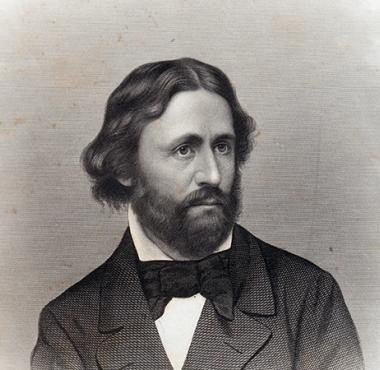
In spring of 1846, U.S. Army Capt. John. C. Frémont led one of the first campaigns of extermination against California’s indigenous population. His soldiers came upon a village of Wintu Indians along the Sacramento River near the present-day city of Redding and massacred every person who could not outrun their horses, perhaps as many as 1,000.
Not only did Frémont go unpunished, he went on to become a U.S. senator and has been venerated as a forefather of the Golden State. Today, his name adorns numerous places and monuments, including Alameda County’s second largest city. There’s an eccentric tower Joaquin Miller built in Frémont’s honor that still stands in the Oakland hills, replete with a marker commemorating the spot (perhaps falsely) as the place where Frémont and his soldiers camped one night in 1846, resting on the eve of their war of extirpation. Numerous schools, like Oakland’s Fremont High, proudly bear his name.
In this way, the genocide committed by white American settlers against California’s indigenous peoples hides in plain sight and constantly normalizes itself. Although indigenous activists have tried repeatedly over the years to interrogate this history by challenging these place names and symbols, they remain memorials to a past Californians have largely never addressed.
Our landscape is littered with these monikers. Johann “John” Sutter’s place in state history is honored with streets bearing his name in San Francisco, Berkeley, and Concord. Sutter Health, one of the East Bay’s largest hospital systems with campuses in Berkeley, Oakland, Castro Valley, and beyond, was named for him. Even Gov. Jerry Brown named his pet Corgi after Sutter.
According to historian Benjamin Madley, numerous ’49ers passed through Sutter’s feudal-like ranch, a key entry point into Gold Rush-era California. There they saw native peoples treated like animals, fed like pigs from a trough, and frequently brutalized.
“By feeding Indians like hogs, Sutter, who routinely presented himself as a European gentleman, suggested that they were animals,” which caused many to view them as “subhuman,” explained Madley in his book American Genocide.
Several prestigious Bay Area universities also bear the names of men who financed what Madley has called the “killing machine” that perpetrated the genocide.
For example, the $100,000 donation to found the University of California’s San Francisco College of Law came from Serranus Hastings, a former state supreme court justice and attorney general. According to Madley, Hastings was also a wealthy ranch owner in Mendocino County and he financed the murder of hundreds of Yuki Indians by a militia in order to steal their land. In this endeavor, a man who would be at various points in his life the state’s top law enforcement official and judge provided material support for genocide. The University of California honored him by naming its San Francisco law school the Hastings College.
While these men are honored through these sanitized place names and monuments that gloss over their deadly crimes, traces of indigenous culture and history continue to be obscured and even destroyed.
“To this day it continues, the cultural genocide,” explained Richard Schwartz in a recent interview. Schwartz, a building contractor by trade, and historian by passion, has spent decades researching Berkeley’s indigenous past. “If you destroy every place a people lived and where their culture remains, you destroy any proof of their existence,” he said.
Much of the East Bay’s present landscape is built atop desecrated Ohlone land and culture. In fact, a romanticized version of the region’s “prehistoric past” was once a selling point for the real estate industry that sought to lure residents to new suburbs. In the North Berkeley hills, one exclusive neighborhood known as Thousand Oaks was advertised in newspapers in 1909 as “the most beautiful piece of ground anywhere” fit for development. “Berkeley’s famous Indian burial ground now offered for sale as a residence park,” trumpeted one article in the San Francisco Call.
“There are many, many sites I’ve recorded in Thousand Oaks,” said Schwartz, including burials, mounds, and petroglyphs in people’s backyards. “When the people moved into the houses,” he said of the white American homebuyers of the early 1900s, “the pestles were still in the mortars.”
But these sites of work, habitation, recreation, and worship were mostly wiped out following the genocide and land theft. The shellmounds on Berkeley and Emeryville’s waterfronts — just several among the at least 450 mounds ringing the Bay — were exploited, dug up, and used as material for road paving. Emeryville’s was later built over, first by a paint factory and then a shopping mall. Berkeley’s became a parking lot, and to this day controversy swirls about its future.
Despite the genocide, the Ohlone and other California tribes survived and are campaigning to protect their sacred sites. In recent years, they’ve fought to prevent destruction of places such as Sogorea Te’, a gathering spot in the present-day city of Vallejo — Vallejo being named after General Mariano Vallejo, who enslaved native peoples at his mills and ranches — as well as Mission and Brushy Peaks in the East Bay Hills. Through the Sogorea Te’ Land Trust, a project organized by Chochenyo and Karkin Ohlone women, Native Americans and their allies hope to return Bay Area land to indigenous stewardship.
Schwartz, who is white, laments the ongoing destruction of places and monuments of the Bay Area’s indigenous people. “We have to make a decision, is this culture hell bent for money and genocide, or will it wake up to not only give a people the same rights everyone else has, but also realize that their culture was amazing, and there’s a lot to be learned from it?”











